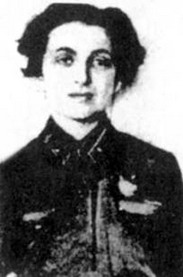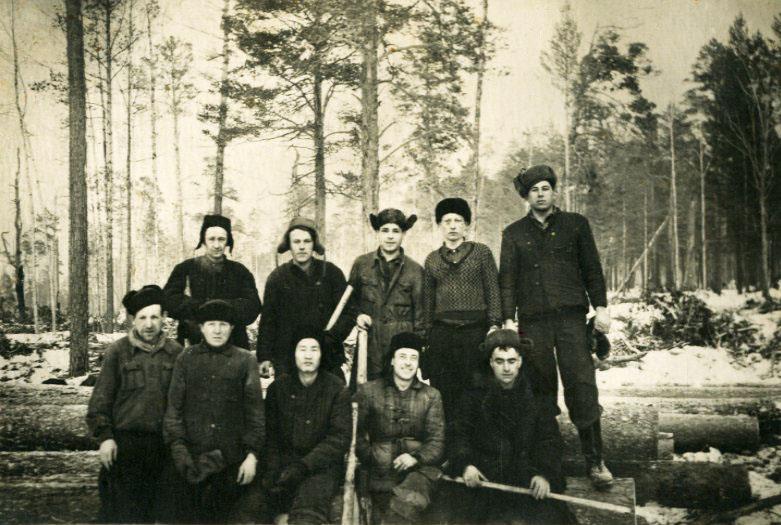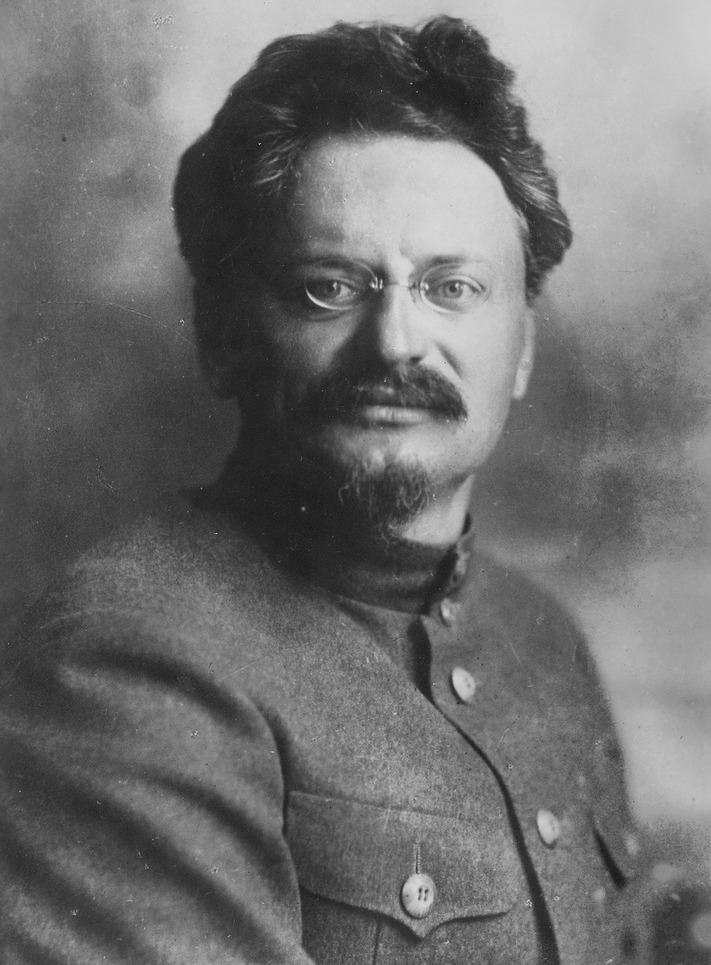Mirra (Maria) Sakhnovsky (Sakhnovskaya) was a fascinating, but controversial, figure, who was willing to go to great lengths to spread her ideology. Her short life was replete with secrets and mystery. Born in the Pale of Settlement, she fell in love with the communist revolution, had an impressive military career, and become the first woman to reach a rank equivalent to general in the Red Army. Her story ended, like many others, when she was thrown under the brutal and blind machine of Stalin’s purges.
Her birth name was Mirra Goetz. On official forms, she always wrote that she was born in 1897 to a middle-class Jewish family in Vilna, and that her father was a simple high school teacher. Many years after her death, it actually came to light that her father had been a senior official in the local government. That information apparently could have been harmful to her had it been discovered by her comrades in the party.

Following the outbreak of World War I in 1914, the Goetz family left Vilna. And after the February Revolution of 1917 and the abolishment of the Pale of Settlement, they moved to Moscow, where her father started a Jewish secondary school. A short time after that, her father remarried and moved with his new family to Riga.
The second revolution broke out in October 1917. At the time, Sakhnovsky was living in Petrograd and had a junior position at Pravda. From the newspaper’s editorial office, she was able to watch the uprising of the masses who had decided to take the reins of power.
By January 1918, Sakhnovsky was already a member of the Communist Party. She volunteered for the Red Army and was sent to the front. Her ideological fervor did not go unnoticed by her commanding officers, who promoted her to the position of secretary to the Chairman of the Council of People’s Commissars in Ukraine’s Security Committee. She returned to the front a few months later, but this time as a platoon commander and the deputy commissar of the battalion that took part in liberating the Crimean Peninsula.
Four months after that, Sakhnovsky was once again assigned to a civilian position. She was sent to Ukraine to implant communist ideology among the local population, even by force if needed.
Six months later, she was back on the front again. This time she served in a field intelligence unit and learned how to crawl through enemy lines and obtain information. According to one of her friends, “she was very beautiful, but played down anything that was feminine about her.”
In 1921, Sakhnovsky found herself face to face with the enemy. But this time the enemy was in the form of sailors and officers from the Baltic Fleet who rebelled against the communist regime at the Kronstadt fortress not far from Petrograd. The rebellion was brutally crushed by the government. For her heroism and performance on the battlefield, she was awarded the Order of the Red Banner.

Following the Kronstadt revolt, she was sent to study in one of the first classes of a new military academy, where she learned core subjects alongside military doctrine and the Chinese language. It is also where she met her husband, Rafail Sakhnovsky. In June 1924, they were both sent on a special mission to China in order to assist their sister communist country and establish a military academy there. On the Chinese side, the commander of the academy was Chiang Kai-shek, who would later become one of China’s most important leaders in the 20th century.
Although Mirra became pregnant while in China, she continued to manage the headquarters of the Soviet delegation and taught the new soldiers at the academy. Right after giving birth, she left her newborn daughter with a babysitter and went back to teaching. To enable her to breastfeed the child, the babysitter had to come to the classroom during the breaks.
The relations between the Soviet Union and China then soured. In the summer of 1926, Mirra and Rafail Sakhnovsky returned to Moscow, where they were appointed to senior positions in the intelligence headquarters of the Red Army. In the meantime, they also had another child. But then, in a flash, their lives turned upside down and they were accused of being Trotskyists.
Leon Trotsky, who until then was thought to be the natural successor of Lenin, found himself embroiled in an ideological rivalry with Stalin after the death of the October Revolution’s leader. Trotsky and his supporters were considered to hold the most left- wing views of Marxism. They advocated for democratic rights in the Soviet Union and opposed collaboration with capitalist entities. Stalin gradually turned most of Trotsky’s supporters against him, and those who remained loyal to Trotsky were ousted from their jobs and imprisoned. Trotsky himself was initially exiled to Kazakhstan, and from there to Turkey. But the suppression of the opposition only gained momentum.

Rafail Sakhnovsky was one of Trotsky’s supporters. As soon as Trotsky was exiled, Sakhnovsky realized he had to disappear if he wanted to protect his family. But that did not help the situation. At first, Mirra was transferred to a position that required lower security clearance, and shortly after that she was arrested. During her investigation, she confessed and expressed public regret for being a Trotskyist. She was tried and expelled from the party and the army, after which she was sent to Siberia for three years. Her husband, Rafail, was also tried and sent to a different city in Siberia.
At the end of 1929, the court unexpectedly reversed its original decision and Mirra Sakhnovsky was released and came back to Moscow. She initially worked as a menial laborer, but at the same time kept on submitting requests to return to the army. Her persistence paid off and she was reinstated to active duty, receiving a rank which at the time was equivalent to general. She was stationed at one of the military academies in the city.
Mirra continued to prove her loyalty to the party and its ideology. In August 1932, she returned to the intelligence headquarters of the Red Army. The fact that she was given a three-room apartment in one of the new buildings in downtown Moscow was a clear indication that her efforts were acknowledged by the top brass.
In October 1933, as part of the party cell commission, Mirra was ordered to cut off all ties with her Trotskyist husband. Battling tears, she confessed to writing him letters and sending him warm clothes and dry toast. But, as expected, she also declared that she opposed and denounced Trotskyism. The chairman of the commission explained to her that her answers were not enough and that she had to prove her loyalty. Mirra agreed and asked Rafail for a divorce. Her loyalty paid off quite quickly and she was appointed to command a special department at the intelligence headquarters, where she was in charge of preparing spies and sabotage agents for their work in foreign countries.
For Sakhnovsky, the year 1934 began with a personal tragedy. Her 10-year-old daughter died suddenly, and her adopted daughter left home. A few months later, Mirra was assigned a new post in the Crimean Peninsula. Her official title was director of a sanatorium for military personnel. According to the unofficial version, she was the commander of a secret spy school. She remained there until April 1937, when she was suddenly arrested once again.
It is not altogether clear why she was arrested. Perhaps one of her overly ambitious colleagues who simply wanted to get rid of her told the authorities that Mirra was still showing traces of Trotskyism. Or perhaps it was only a matter of time before Stalin’s purge machine reached her as well, like it did everyone else. On July 31, 1937, Mirra Sakhnovsky was executed by a firing squad in the basement of the NKVD’s Lubyanka Prison.
Did she confess to anything before her death? She probably did in order to save the life of her son, Pavel. Three months later, Rafail Sakhnovsky was also executed somewhere in the labor camp to which he had been sent. Young Pavel managed to survive even though he was branded as the son of enemies of the revolution and the party. In 1941, after Nazi Germany attacked its former ally, Pavel chose to defend his homeland and fought on the front near Moscow and Stalingrad. After being discharged from the army in 1946, he settled in the Donbas region.
Stalin died in March 1953. In February 1956, Nikita Khrushchev, the First Secretary of the Communist Party, “exposed the crimes of Stalinism” at a closed session of the 20th Party Congress. Furthermore, he announced that the “enemies of the people” would have their names cleared. In 1959, Pavel received official confirmation of his mother’s execution, and he was also given compensation amounting to three of her salaries. 22 years after her death, Mirra Sakhnovsky, one of the first women in the Soviet Union to graduate from a military academy, regained her rank of general.